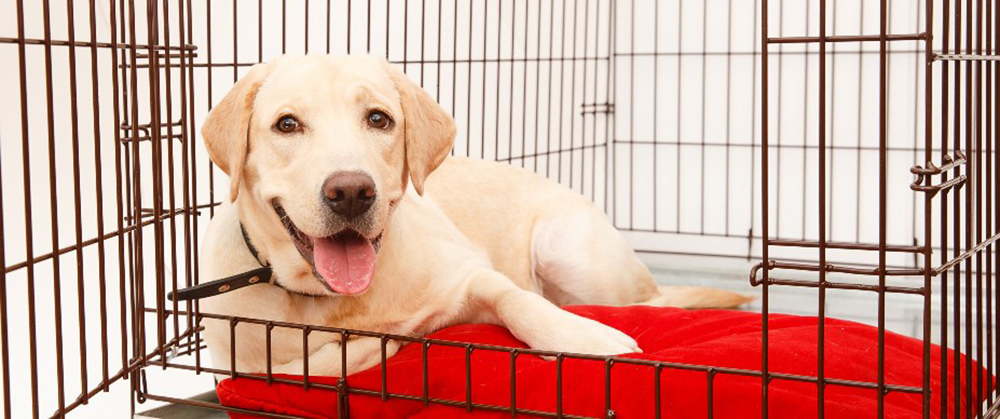By Heidi Clayton
There are many benefits to using a crate to manage your dog or puppy. Using a crate is not mean. And no, you will not have to keep your dog or puppy in a crate all of the time.
Crate training is a vital part of puppy and dog training for a variety of reasons, the most important being safety. The primary benefit of training your puppy to love being in a crate is to keep them out of trouble.
It’s not reasonable to believe you will be able to watch your puppy every minute of the day. Putting your puppy in the crate when you aren’t watching them will prevent them from ingesting something harmful to them.
The average intestinal blockage surgery is no less than $5,000. While you can replace most things destroyed in your home, you can’t replace a puppy that has consumed something harmful. And yes, an intestinal obstruction can kill your dog or puppy.
Crating a puppy when they are not being watched will also help with the process of housebreaking. Given the chance to be clean, most puppies will do so by not going to the bathroom in their crate. If you are using a play pen area, remember not to make it large enough where the puppy can use a corner of it as the bathroom.
If you have brought home a rescue or older dog whose habits and temperament you do not know, a crate is a valuable management tool. Remember when adopting an older dog, the two of you don’t know each other yet so putting them into a crate can provide much-needed time to decompress and will avoid finding out the hard way that they are destructive.
Here are some tips for making crate training easier on both the dog and the human:
Make the crate as comfy a place as possible with crate pads and blankets.
Try feeding them an occasional meal in their crate with the door closed.
Give them a yummy bone or treat inside of their crate with the door shut for no reason at all during the day. Do this when you are home so your puppy or dog learns they do not get your attention 24/7.
Reward them with a treat for being settled and relaxed when in their crates.
What you should never do is yell or scream at the puppy when they have been naughty while putting them into the crate. If you need to give them a time out, simply pick them up with zero emotion and no words to put them in the crate. Yelling will send the message that going into the crate is frightening.
Most of the time when a puppy is acting wild, it’s because they need a nap. Also, try not to free them when they are barking and whining unless you feel it might be a potty situation. If you free a puppy for not being settled, they will learn that demanding and obnoxious behaviors will be rewarded.
The reality is that at some point in your dog’s life they will need to be in a crate. Whether at the vet, the groomer or while being boarded, your puppy or dog will need to be confined. Avoid causing your puppy or dog undue stress when they are in these situations by crate training right away at home.
Heidi Clayton started Four On the Floor Dog Training to provide positive, reward-based dog training in South Jersey. She breeds, trains and shows bull terriers under the SoraBully’s Bull Terriers kennel name. Email questions to heidi@fouronthefloordogtraining.com or visit fouronthefloordogtraining.net.






